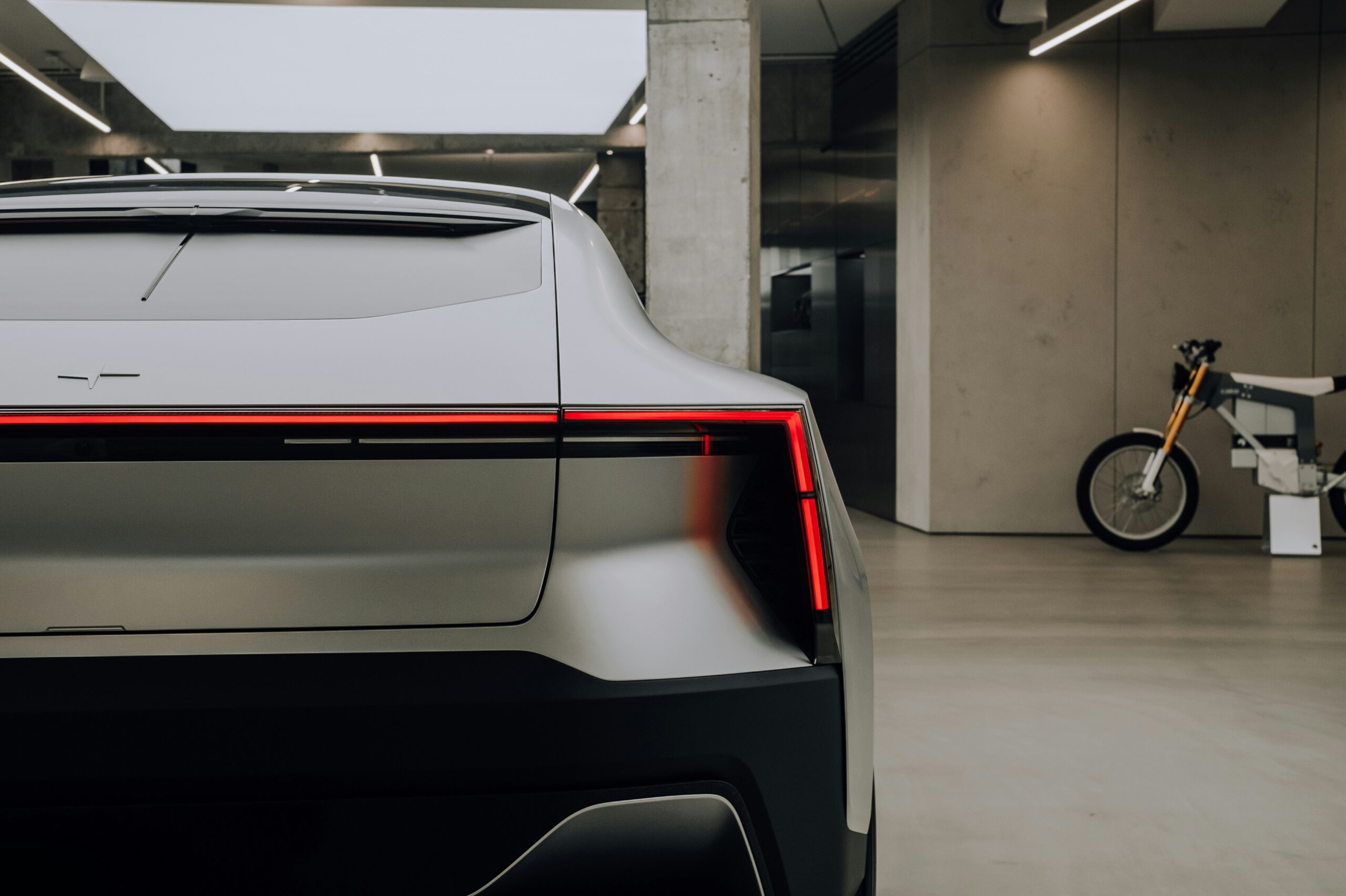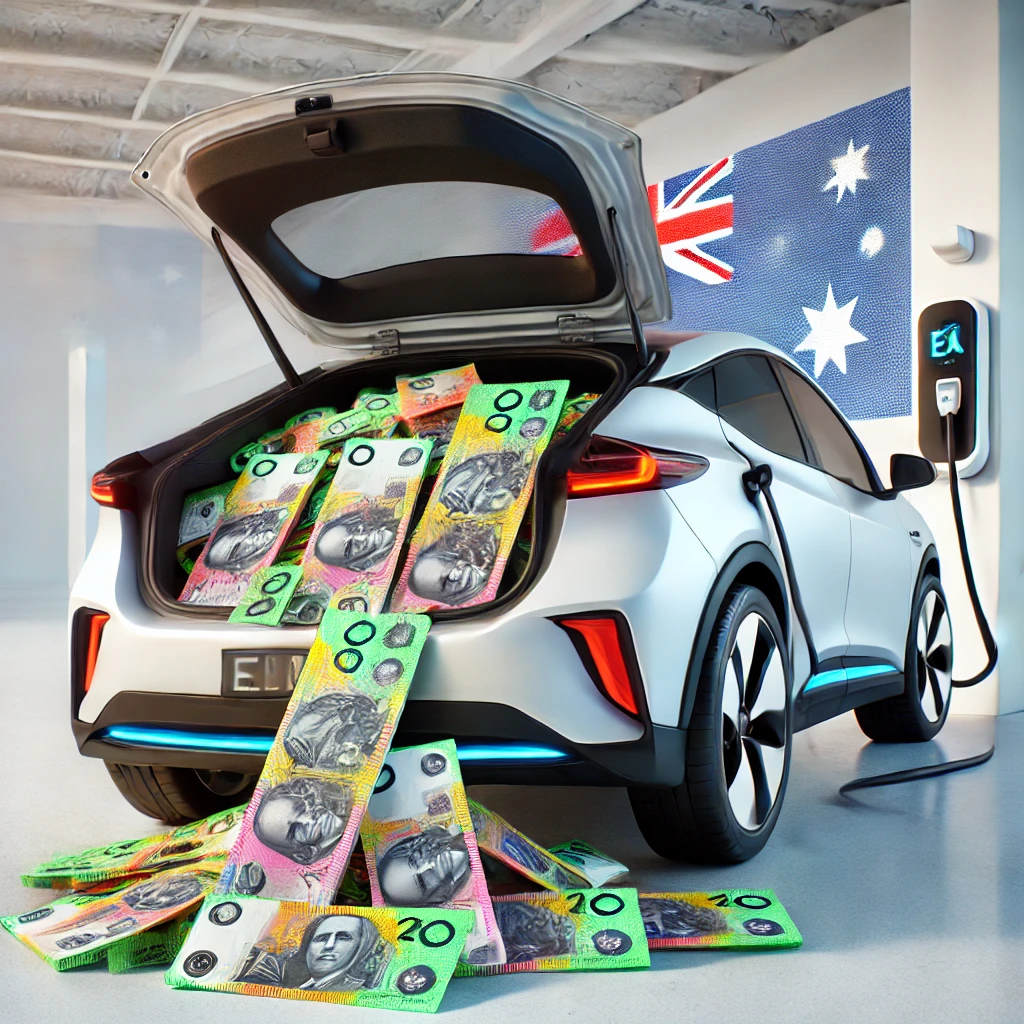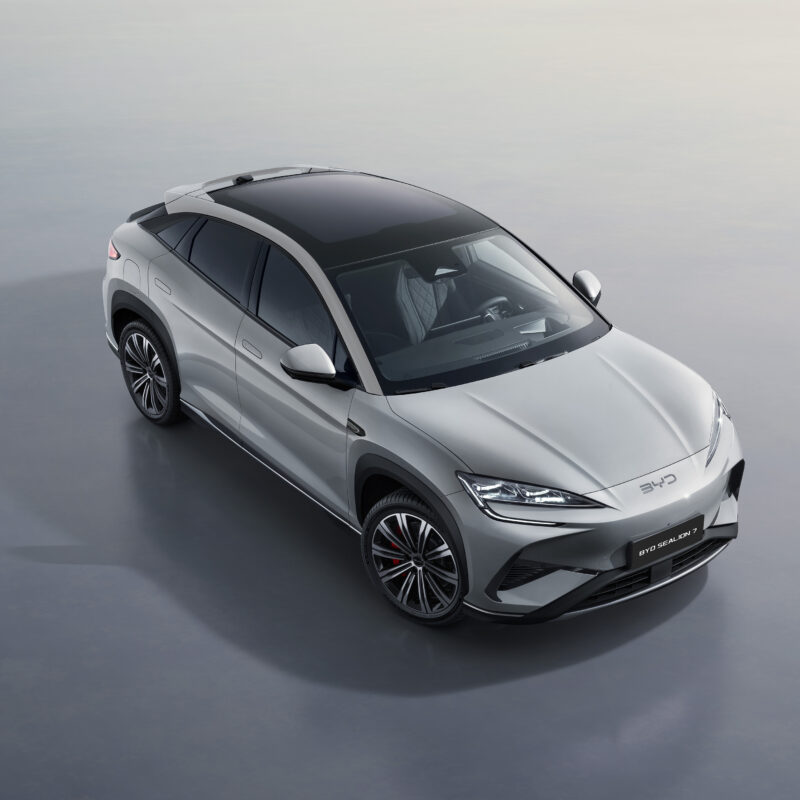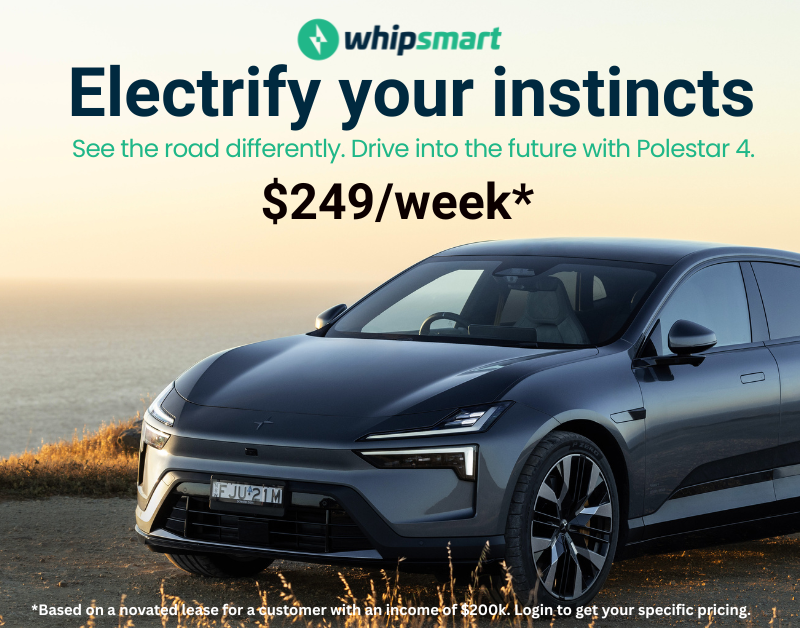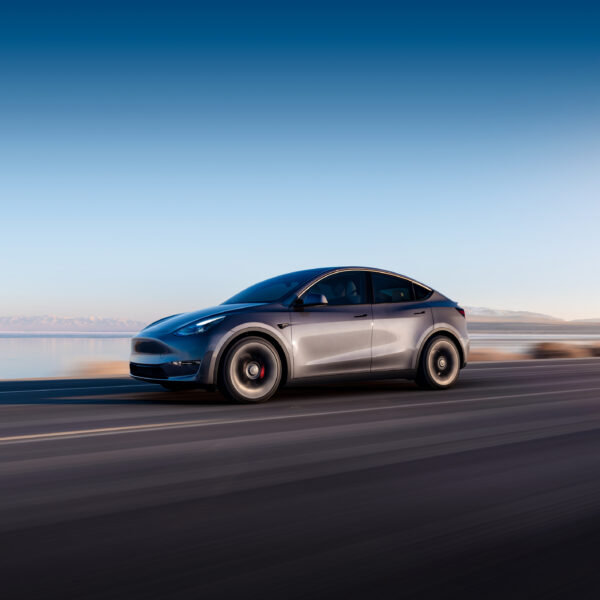
Australia is on the verge of an electric van revolution, with plans underway to electrify commercial vehicle fleets across the country. This initiative is part of a broader strategy to reduce greenhouse gas emissions and transition to a more sustainable transportation system.
Several leading automotive manufacturers are set to introduce a range of electric vans to the Australian market, targeting businesses and government agencies looking to update their fleets with environmentally friendly options. These electric vans promise to offer a cost-effective, efficient, and zero-emission alternative to traditional fuel-powered vehicles.
The push for electric vans is supported by both federal and state government incentives, including grants, tax benefits, and infrastructure investments. These measures aim to make electric vehicles more accessible and affordable for businesses of all sizes.
The electrification of commercial fleets is expected to have a significant impact on Australia’s carbon footprint, given the substantial role that transportation plays in the country’s overall emissions. By transitioning to electric vans, businesses can not only reduce their environmental impact but also benefit from lower operating and maintenance costs.
This move towards electric vans underscores Australia’s commitment to embracing clean energy and innovative technologies to tackle climate change. As more companies join the electric van movement, it paves the way for a greener, more sustainable future in Australian transportation.
Current electric van options available in Australia
Below are the current main contenders in the electric van market in Australia currently. But expect to see some additional options hit the roads in the next 12-24 months including the VW ID.Buzz Cargo and the VW Transporter 7, the Renault Master, the Ford E-Transit Custom, and the LDV edeliver 7.
Peugeot e-Partner from $59,990
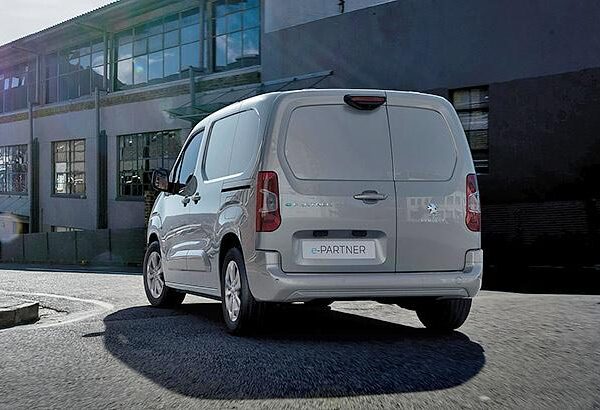
The Peugeot’s e-Partner offers a cost effective alternative but has only a limited range.
The e-Partner offers a clever and car-like two-seater front cabin, featuring an array of comfort and safety equipment.
Meanwhile, out back, payload is 800kg, braked towing capacity is just 750kg and load volume is 3.9 cubic metres.
The driving experience is “Car-like” and sits on the acclaimed 308 hatchback’s modular platform, with a 100kW electric motor driving the front wheels. A 50kWh battery provides a modest 245km of range.
As with the related Peugeot e-2008 EV SUV, replenishing the battery from 10-80 per cent with a 50kW DC public charger requires around 45 minutes, or nearly eight hours to 100 percent with an optional 7kW Wallbox and 24 hours via a household socket.
| Peugeot e-Partner specifications | |
| Motor: | Synchronous electric permanent-magnet |
| Transmission/drive: | Single-speed reduction gear/FWD |
| Battery: | 50kWh Lithium Ion |
| Power/torque: | 100kW/260Nm |
| 0-100km/h: | 11.7s |
| Consumption: | 19.6 kWh/100km (estimated) |
| Electric range: | 245km |
| Warranty: | 5yr/200,000km |
| Battery warranty: | 8yr/160,000km |
| Safety rating: | 5 stars |
Renault Kangoo E-Tech from around $60,000
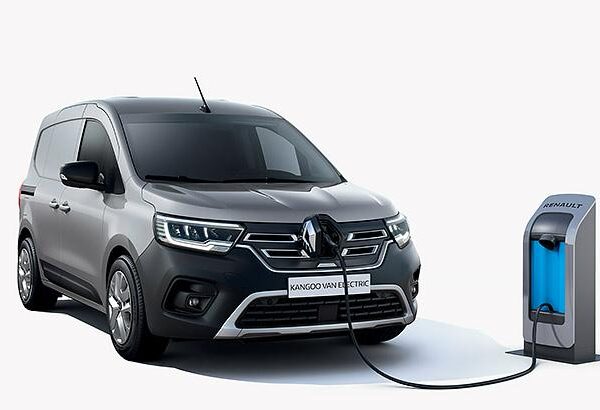
The Renault Kangoo E-Tech is the brand’s next-gen EV van.
It kicks off with the L1 Compact Pro, measuring in at nearly 4.5 metres long. It includes a 608kg payload, a decent 1500kg braked towing capacity (750kg unbraked) and 3.3 cubic metre load volume.
It is yet to be confirmed if Australia will get L2 Maxi Pro van, which features a stretched body and wheelbase. Payload on the larger version increases to nearly 764kg while load volume is 4.2 cubic metres.
A 90kW/245Nm motor powered by an underfloor 45kWh battery drives the front wheels, resulting in a 285km range.
Plugging into a 50kW DC public charger will get the Renault from 10 to 80 per cent full in around 60 minutes, or nearly seven hours to 100 per cent with an optional 7kW Wallbox and 23 hours via a household socket.
Civilised, comfortable, spacious and functional inside, the Kangoo E-Tech reflects its maker’s long experience making compact vans.
| Renault Kangoo E-Tech specifications | |
| Motor: | Synchronous electric permanent-magnet |
| Transmission/drive: | Single-speed reduction gear/FWD |
| Battery: | 45kWh Lithium Ion |
| Power/torque: | 90kW/245Nm |
| >0-100km/h: | 11.6s |
| Consumption: | 19.2 kWh/100km (estimated) |
| Electric range: | 285km |
| Warranty: | N/A |
| Battery warranty: | N/A |
| Safety rating: | 4 stars |
Mercedes-Benz eVito and EQV vans from $89,353
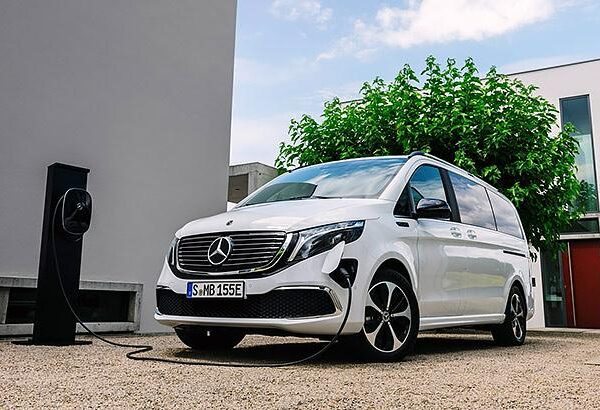
Mercedes-Benz Vans has gone all-in with EVs.
Derived from the current (2014-vintage) V-Class, the eVito Van and eVito Tourer (from nearly $120,000) are commercial van and people-mover models respectively, while the EQV (from about $160,000) is a more-lavishly equipped version of the latter.
The eVito Tourer and EQV use a 150kW motor and 90kWh battery to power the front wheels.
Using a 50kW public DC fast charger, the 90kWh battery requires about 80 minutes to go from 10 to 80 per cent charge. A 100 per cent top-up with a 7kW Wallbox needs nearly 15 hours, or almost 48 hours with a regular home socket.
Meanwhile, the eVito commercial van employs an 85kW electric motor and 60kWh battery pack, for a WLTP range of 242km. The thinking here prioritises more-affordable pricing and quicker recharging. Charging times are about two-thirds those of the 90kWh battery.
The batteries are laid under the cabin floor to minimise interior-space interference. The people movers provide standard eight-person or more-luxurious six-person seating configurations.
| Mercedes-Benz EQV and eVito Tourer people movers specifications | |
| Motor: | Synchronous electric permanent-magnet |
| Transmission/drive: | Single-speed reduction gear/FWD |
| Battery: | 90kWh (60kWh) Lithium Ion |
| Power/torque: | 150kW/366Nm (85kW/360Nm) |
| 0-100km/h: | 12.1s |
| Consumption: | 21.5-27.6kWh/100km (21.3-27.2kWh/100km) |
| Electric range: | 356-361km (242-314km) |
| Warranty: | 5yr/unlimited |
| Battery warranty: | 8yr/160,000km |
| Safety rating: | N/A |
Ford E-Transit van from $104,990
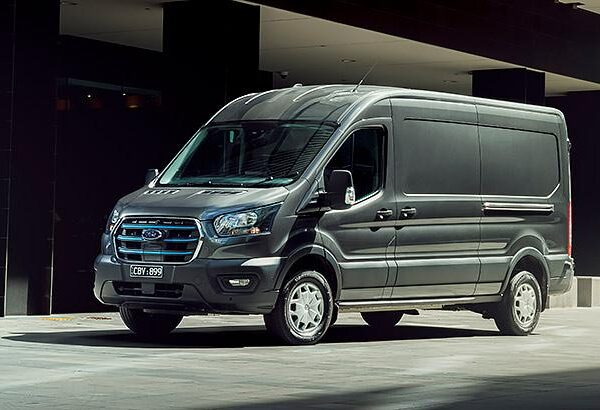
The E-Transit is based on the big-body Transit Heavy and is initially only offered in the rear-wheel drive 420L long-wheelbase body style.
With 198kW, this is the most powerful Transit ever, and comes with a 68kWh battery pack slung underneath, so as not to impact carrying capacity but provides around 300km or range.
To that end, there’s up to 11cubic metres of space in the mid-roof size and 12.4 cubic metres in $1500-extra high-roof versions, matching the regular Transit diesel equivalents. Gross vehicle mass of up to 4250kg is claimed, with a maximum payload of 1616kg.
New suspension is said to deliver improved steering, handling, control and ride comfort properties.
Find a 50kW-plus public charging station and the battery can be replenished from 10 to 80 per cent in about an hour, or to 100 per cent in under 12 hours with an optional 7kW Wallbox. Plugging in at home could take over 33 hours.
It’s not cheap, but with a 40% reduction in service costs, the E-Transit can make a case for itself.
| Ford e-Transit Mid Roof/High Roof specifications | |
| Motor: | Synchronous electric permanent-magnet |
| Transmission/drive: | Single-speed reduction gear/RWD |
| Battery: | 68kWh Lithium Ion |
| Power/torque: | 198kW/430Nm |
| 0-100km/h: | N/A |
| Consumption: | 30-35kWh/100km (estimated) |
| Electric range: | 295/307km |
| Warranty: | 5yr/unlimited |
| Battery warranty: | 8yr/160,000km |
| Safety rating: | N/A |
LDV eDeliver 9 van from about $116,000
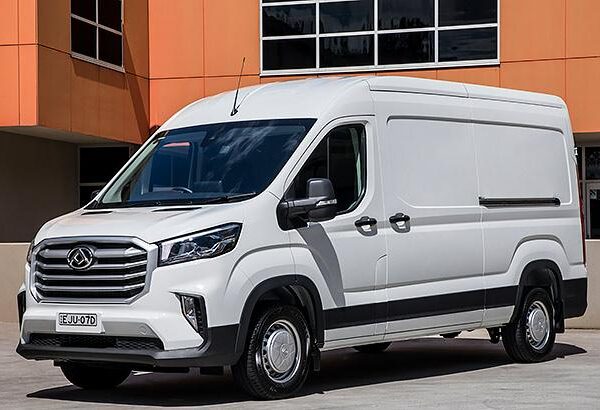
The popular Deliver 9 from LDV of China gains the all-important ‘e’ prefix.
Available in three variants – a long-wheelbase mid-roof van, a long-wheelbase high-roof van and a cab-chassis – the vans use an 88kWh battery to power a front-mounted 150kW motor, for up to 280km of range. Top speed is limited to just 90km/h.
Note there is also a cab-chassis ute from $99,990, with a smaller, 65kWh battery, offering 150km of range.
Charging the 88kWh battery from a 10-80 per cent using a 50kW DC public outlet requires around 100 minutes, or for 100 per cent about 15 hours with an optional 7kW Wallbox. A regular home socket could take up to 50 hours.
Interior or cargo space has not been impacted in this van’s transition from diesel to electric, with 10.97 and 12.33 cubic metres of space offered in the mid and high-roof vans respectively. Payload is 1410kg for the mid-roof and 1350kg for the high-roof, while braked towing capacity is rated at 1500kg for all.
| LDV eDeliver 9specifications | |
| Motor: | Synchronous electric permanent-magnet |
| Transmission/drive: | Single-speed reduction gear/FWD |
| Battery: | 65kWh or 88.5kWh Lithium Ion |
| Power/torque: | 150kW/310Nm |
| 0-100km/h: | N/A |
| Consumption: | 33.9kWh/100km |
| Electric range: | 280km (88.5kWh), 150km (65kWh) |
| Warranty: | 4yr/160,000km |
| Battery warranty: | 8yr/160,000km |
| Safety rating: | N/A |
Electric range is quoted using the World harmonised Light vehicle Testing Procedure (WLTP), or otherwise are manufacturers’ claims.


